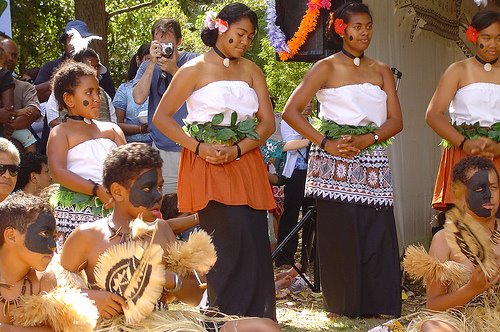 IT is a small fruit signified on the top end of our national flag and this fruit is customarily used as an essential ingredient that brought chocolates all around the world to life.
IT is a small fruit signified on the top end of our national flag and this fruit is customarily used as an essential ingredient that brought chocolates all around the world to life. For decades this unique fruit has been in Fiji and the people of Namau Village in Naloto, Tailevu are trying to make the best use of it. Better known to them as Fiji's chocolate, cocoa farmers at Namau are on the verge of producing their own organic and pure cocoa products in the country.
Ultimately, they want to build Fiji's first chocolate factory, and thus be the first to make an truly original chocolate that Fiji can call it sown. The village is situated at about 60 feet above sea level, off Lodoni Road on a hill. It is part of the mataqali Navukuta with a population of about 158 people.
The twenty-three families that live in Namau depend essentially on the somewhat 18,000 cocoa trees that surround the village. These families work under the careful guidance of farm manager, Tevita Niumou_ a family man who has spent half of his life babysitting these green treasures.
Tevita says elders of the villager started cocoa farming in the 1960s and taught young youths the importance of the cocoa fruit. "I left high school in 1978 and began working with my father who showed me everything there is to know about the cocoa fruit," he said. Tevita's big dreams for his family and the whole village rests on the cocoa trees.
"Every household in the village has land breeding thousands of cocoa trees; it's our main source of income," said the 46-year-old. He said the village was recently visited by a couple from Sweden who recognised a cocoa fruit pictured on the national flag. He said the couple had inquired with the Ministry of Agriculture looking for the location of a cocoa farm and later found themselves at Tevita's front door.
"It was unbelievable when I later found out the tourists owned a chocolate factory in Sweden and were interested in our cocoa produce," said Tevita. "I gave them a tour around the farm and demonstrated our way of processing cocoa beans," he said.
He said the couple were amazed with the old system used by farmers and offered to donate machines that could extract cocoa liquid for the production of chocolates. Tevita says bumping into the couple from Sweden was sheer luck and it was even more interesting that the Fiji flag was the root cause of it.
He said the project to build a factory in Korovou has the full support of the Tailevu Provincial Council. At a recent meeting, council chairman Josefa Serulagilagi who is also the chairman for the Tailevu Cocoa Growers and Producers Association, said the couple were from the Cocoa Bello of Sweden organisation and had advised villagers not to sell cocoa seeds but to make chocolates here in Fiji.
Mr Serulagilagi said Tailevu cocoa businesses have been running for the past 20 years and the couple's guidance was of great assistance to the Tailevu framers. He said the couple sent experts after returning to Sweden to conduct a two-week training workshop at Namau and also invited eight participants including himself to Sweden for a two-week educational tour.
The objective, he said, was to see and learn how the finest chocolates in the world were produced and to expand their knowledge about manufacturing chocolates. Mr Serulagilagi said the trip was sponsored by Swedish International Development Agency (SIDA).
He said there was even an organisation in Sweden that was willing to fund the establishment of the fist ever chocolate factory at Korovou town.
Adapted from the Fijitimes.com


